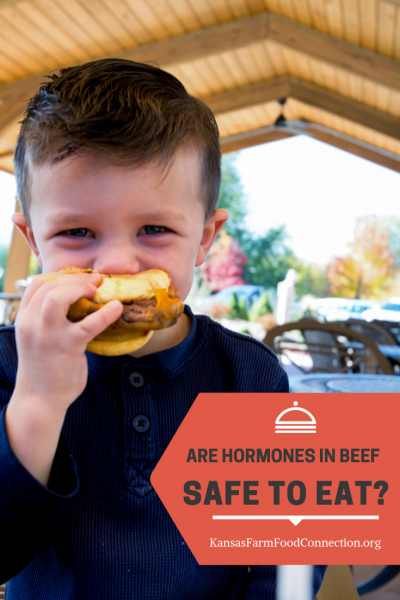Are Hormones in Beef Safe?
Hormones are sometimes used in beef production and many people have questions about them. Is the beef safe to eat? Why use hormones anyway? What’s the process?
We want to shed some light on all these questions so you can feel confident that beef is safe for you and your family to eat.
Hormones in Food
First off, all living things — plants, animals, people — produce hormones. They help regulate certain biological functions and activities, including growth. So, small amounts of naturally occurring hormones are in all foods derived from plants or animals.
The hormones used in beef production are only those that are also naturally produced by cattle. They include estrogen, progesterone and testosterone, as well as synthetic versions of them.
Why Are Hormones Used in Beef Production?
The main reason ranchers use hormones is to help cattle grow faster. The growth-promoting hormones are strategically used during finishing (a three- to five-month period before the animal is harvested) so the animal will bulk up.
Because the animal puts on weight faster, it has less of an impact on the environment than a non-treated animal. It takes less time (and thus food and water) to finish the animal. This also lowers the total cost of producing the beef — a savings that’s passed along to the consumer. Meat from implanted cattle (meaning they receive slow-release doses of hormones) costs less because it’s less expensive to produce.
Is Beef Treated with Hormones Safe to Eat?
It’s helpful to put the hormone levels of beef into perspective. Scientists can measure estrogenic activity, which is a technical way of saying the level at which certain foods (and even plastics!) mimic the effects of the hormone estrogen. Here are the estrogenic levels of common foods:
- Pinto beans: 900,000
- Peanuts: 100,000
- Eggs: 555
- Milk: 32
- Beef from an implanted steer: 7
- Beef from a non-implanted steer: 5
Now, let’s put this in the context of how much estrogen people produce:
- Pregnant woman: 19,600,000 nanograms/day
- Non-pregnant woman: 513,000 nanograms/day
- Adult man: 136,000 nanograms/day
- Pre-pubescent child: 41,000 nanograms/day
- 500 g (just over a pound) of beef from implanted cattle: 7 nanograms
As you can see, the hormone levels in beef are very low.
On top of that, added hormones are carefully monitored by the Food and Drug Administration (FDA) and are well within the limits of what is safe to consume.
So, what happens to the hormones we eat? The acids and enzymes in our stomachs break down all of our food, making energy and nutrients available for our bodies to use. According to a study published in The Journal of Nutrition, hormones found in dairy and beef are digested in the stomach and are not passed into the bloodstream. This means these foods do not affect our own hormone production.
How Does It Work?
The hormones are delivered through a small pellet that’s implanted just under the skin of the ear. This is important because cattle ears are not used in food production. So, the original pellets never end up in the food we eat.
The implants contain a small amount of hormones, which are released over time. Animals are never implanted with more than one pellet at a time.
We want the food we feed our families to be healthy and safe to eat. Hopefully this overview has addressed some common misperceptions about the use of hormones in beef production and helped you understand that it’s perfectly safe to enjoy beef at your table!





